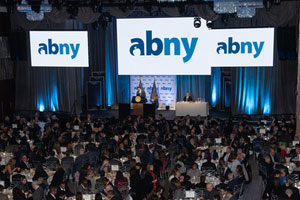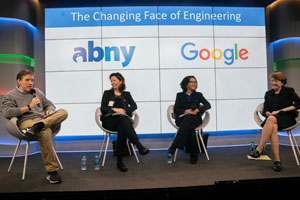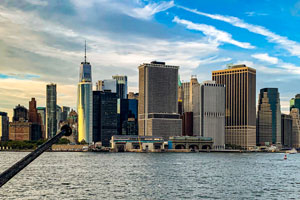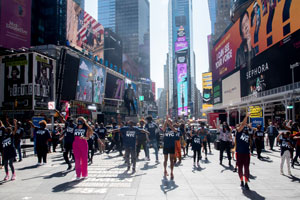February: Architecture and Design
We are honoring YPs making their mark on the physical landscape of New York City through their work in architecture and design.
Congratulations to our February Spotlights of the Month, Delma Palma and Adam Roberts!
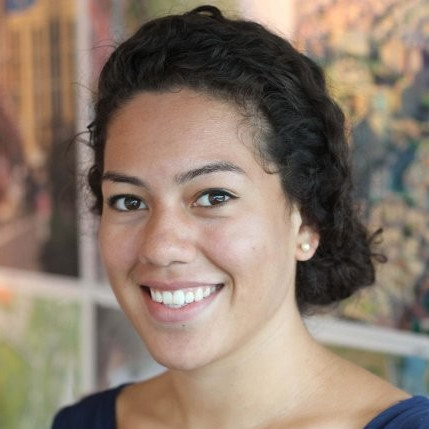
Delma Palma
Before moving to New York City as an Enterprise Fellow to work on urban design policy at NYCHA, I was at an architecture and urban design firm in Washington D.C. I was working with housing authorities across the country to design mixed-income communities in areas of historic disinvestment. We were revitalizing neighborhoods through urban design and architecture that was diverse, affordable, and beautiful. We worked with local governments to create great places, which eventually led me to want to work in the government systems that were making these big decisions. Before arriving in Washington DC, I was in Chile at the largest social housing nonprofit in Latin America where I was working on transitional housing and social inclusion programs to fight extreme poverty in South and Central American informal settlements. Through my work in the field of architecture and urban design, I am committed to using design as a tool to build equity and livability in urban areas.
I am really proud to be helping integrate design excellence into public housing communities in New York City. I truly believe that design matters and yet it is something that more often than not is considered a luxury. In a city that is hyper focused on high design and building, we must understand the backbone of our city (our people) rely on affordable housing. It contributes to the diversity and opportunity New York is known for and it is important to design it well. NYCHA covers over 2,400 acres of New York City and, due to many reasons, it can sometimes feel disconnected from the rest of the neighborhood. My work at NYCHA is focused on how to better connect our residents through the design of the public realm. I am proud of the partnerships we have been able to build through this work and the relationships with different agencies, nonprofits, and residents through our community-led process.
That is a complicated question because is it about architecture, public housing, or government in general? The easy answer is that I think we need more architects who are committed to the public good, whether it is in the private sector or the public one, so I would encourage folks who are thinking about design to consider design of the built environment. Architects are often told that they are generalists—that we know a little bit about a lot of things. Since I do believe that this is true, I think architects make thoughtful city planners because they are constantly re-evaluating how each change impacts the bigger picture. Cities are the interaction of buildings, spaces and people. That interaction is essential to what you do as an architect—it is just on a smaller scale. Bringing that expertise to the city scale with the public interest in mind can have quite the impact.
While working at NYCHA I have been able to see many stretches of New York City. I have had the opportunity to visit different neighborhoods in all five boroughs and learn how the built environment impacts the daily lives of over half a million New Yorkers who live in public housing. Focusing on how the physical space can influence significant issues such as safety, health, and community resilience in these diverse neighborhoods has brought me very in tune with the city I call home. I have seen residents and local organizations advocate for better design in their neighborhoods and have realized that together we are the ones who incrementally make this city stronger through action. I know now that even if we were not born or raised here, we can all contribute to this city’s continuous improvement—and that is what truly makes us New Yorkers.
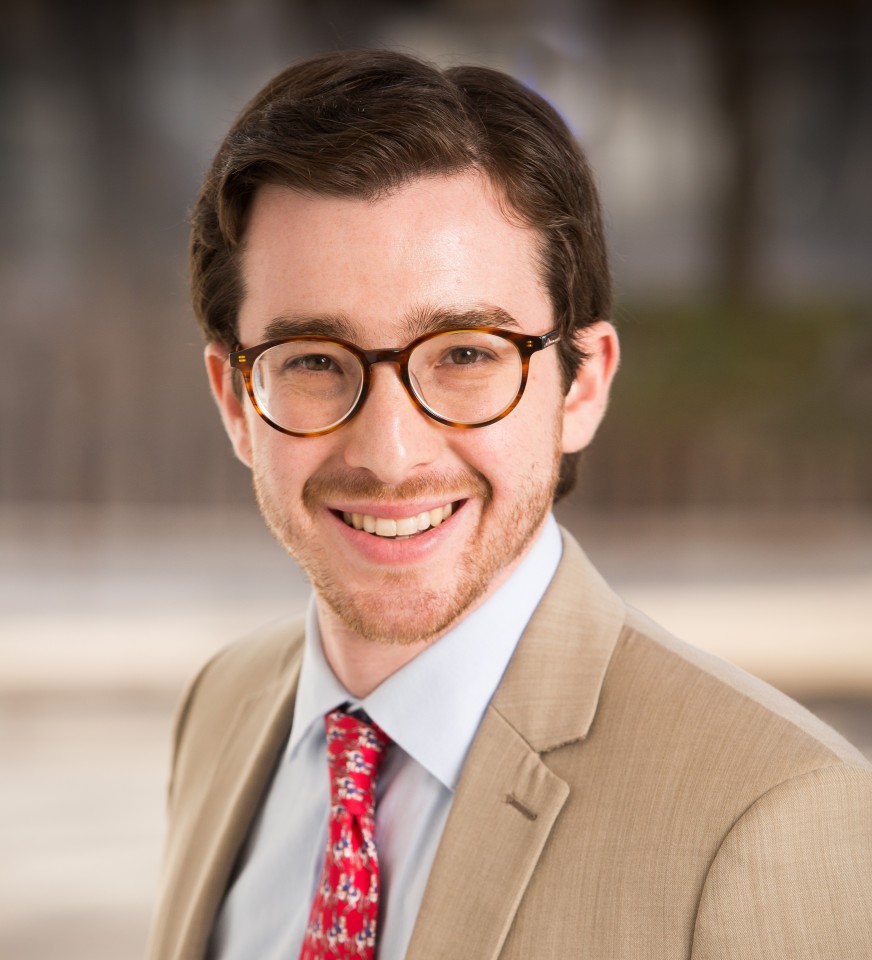
Adam Roberts
I have been in government since my first internship for Senator Schumer back in high school. This led me to work for the City Council and various political campaigns. Building upon this, I also had an interest in urban studies, particularly architecture. Though both my undergraduate and graduate degrees are in political science, I took numerous architecture classes at both levels. After completing my graduate studies at Columbia, a friend passed along that AIA New York was looking for someone to handle their government work, which seemed like a natural fit considering my government experience and interest in architecture. Since 2017, I advocate on behalf of good design in New York City, helping to turn the architectural community into an active political community.
My proudest moment at AIA New York was the passage of Local Law 97 of 2019, which mandates that buildings stay under carbon emissions limits. Currently, 70% of carbon emissions in NYC originate from buildings. This law has many impacts: it mitigates the effects of climate change, improves air quality, creates thousands of jobs, and betters living and work conditions for countless New Yorkers. AIA New York’s members worked in conjunction with Council Member Constantinides and allied organizations to ensure that the law’s requirements would be enforceable and achievable, while also gathering support in the City Council for its passage. Though much work remains to fully implement the law, Local Law 97 should transform NYC’s architecture on a massive citywide scale.
My advice is to be open to work in many different aspects of the field, not only designing buildings. Architecture is a great field for someone looking to have a diverse range of career options. You can work for an architecture firm, general contractor, developer, government agency, university, or nonprofit. Depending on where you work, you can do design, project management, building management, real estate development, procurement, teaching, or government relations. Those who are looking for a field with a wide range of opportunities should strongly consider architecture.
Growing up on Long Island, I considered myself a quasi-New Yorker my whole life. When I felt like a true New Yorker though, was when I became involved in Democratic politics ten years ago in my neighborhood, the Upper East Side. While local politics can be a tough environment, it provides a sense of place and community. I have gotten to know countless friends, neighbors, and community leaders through this work. Over the last few years, outside of my day job, I served as a Democratic District Leader and currently serve as a Democratic State Committee Member for the Upper East Side.

